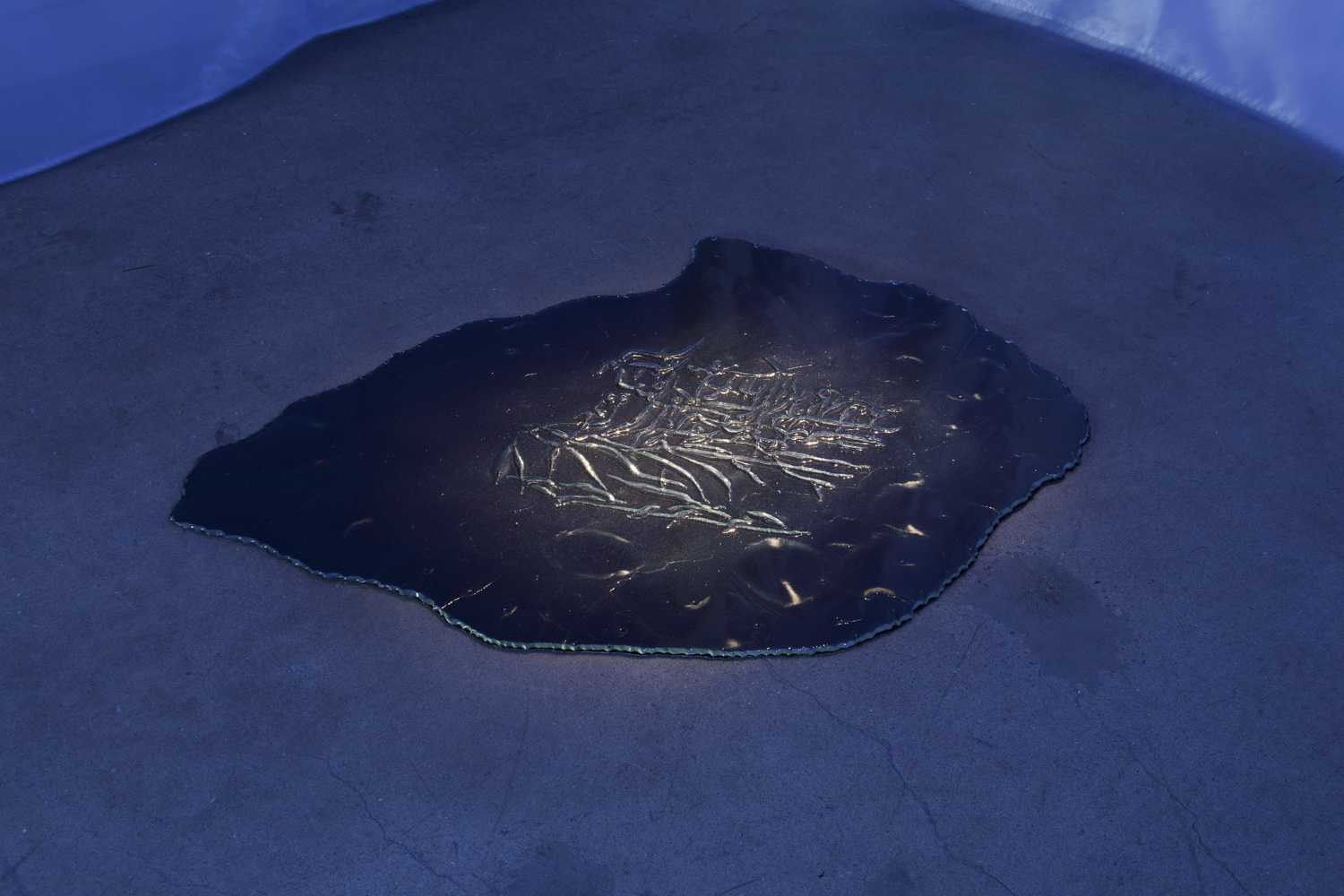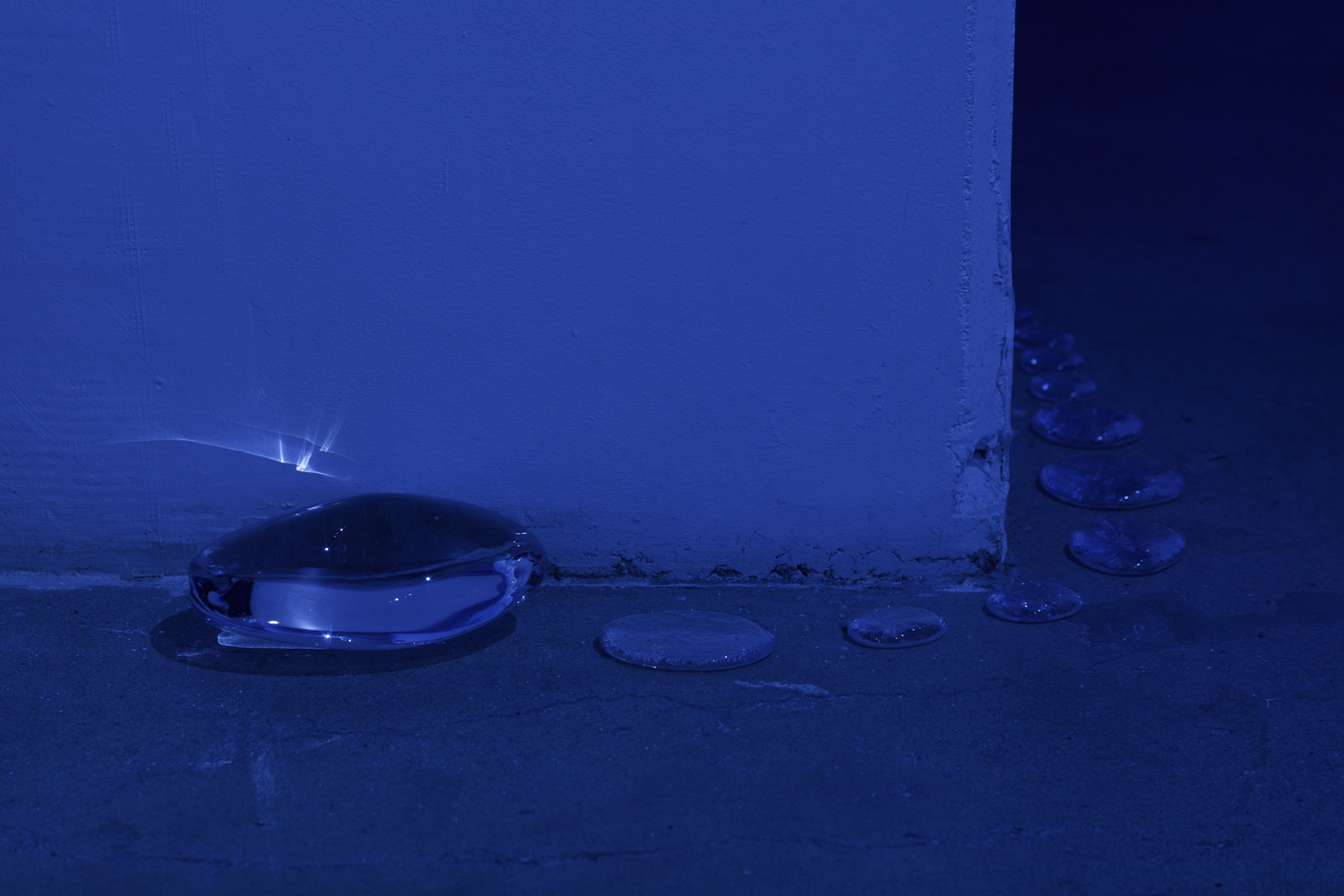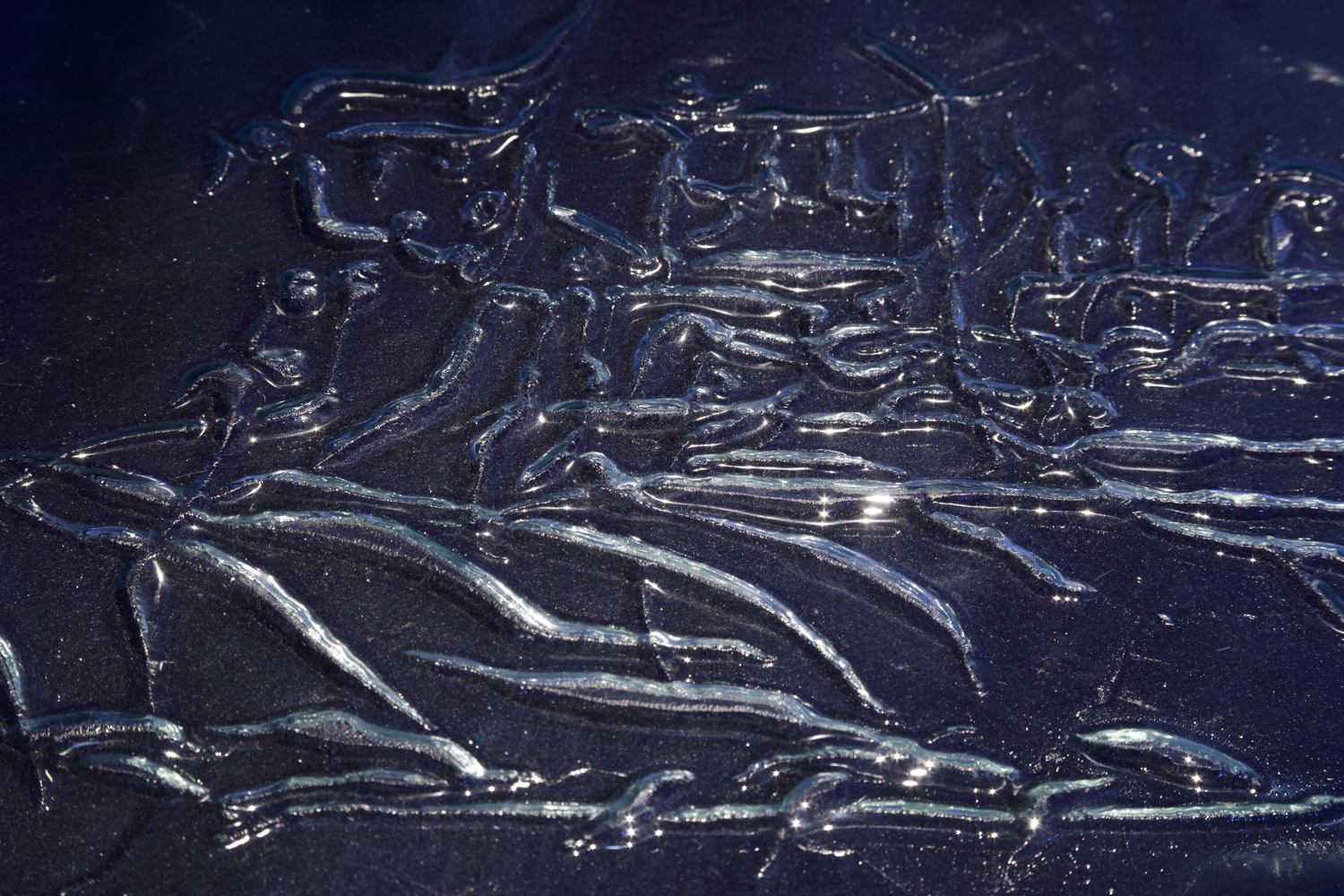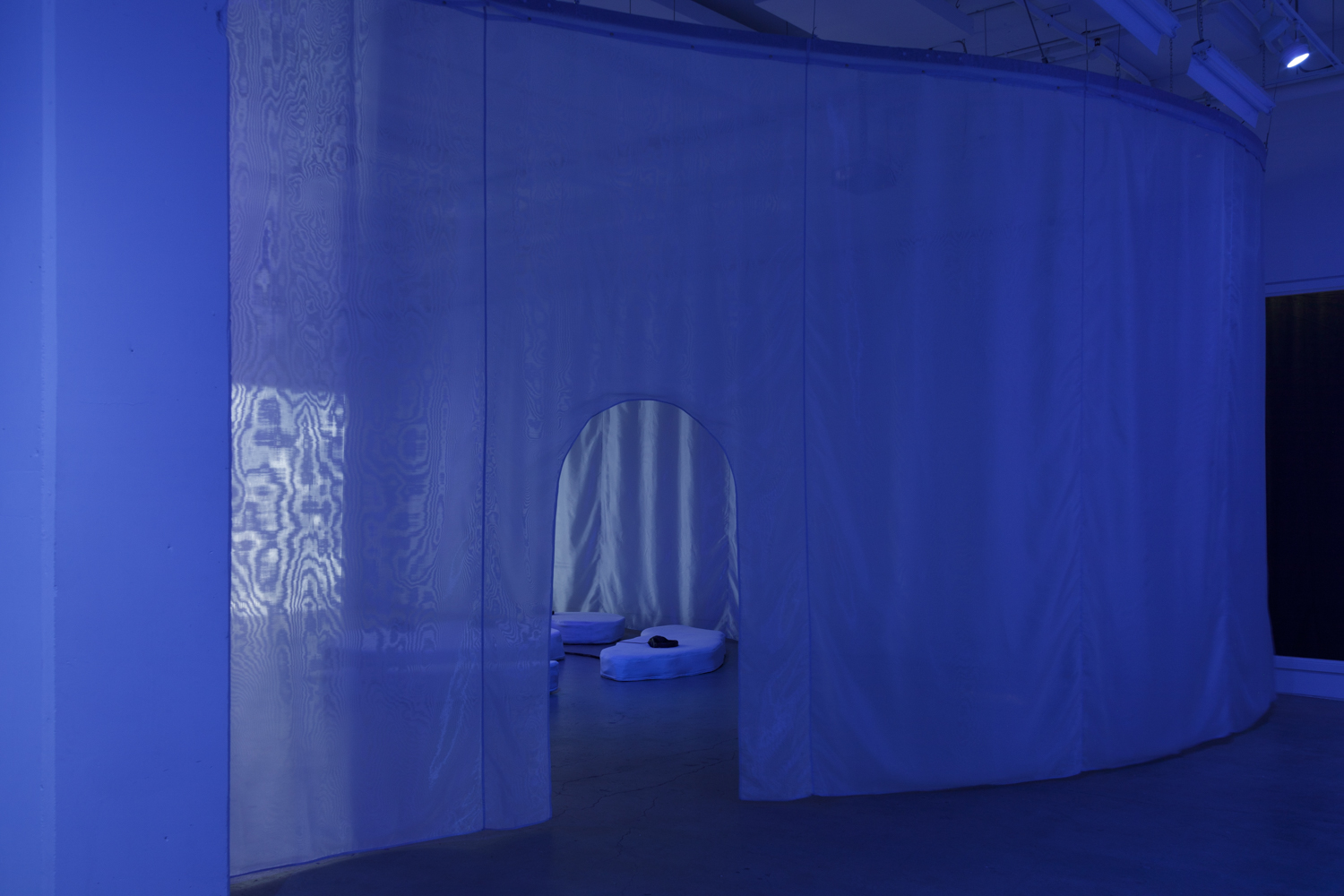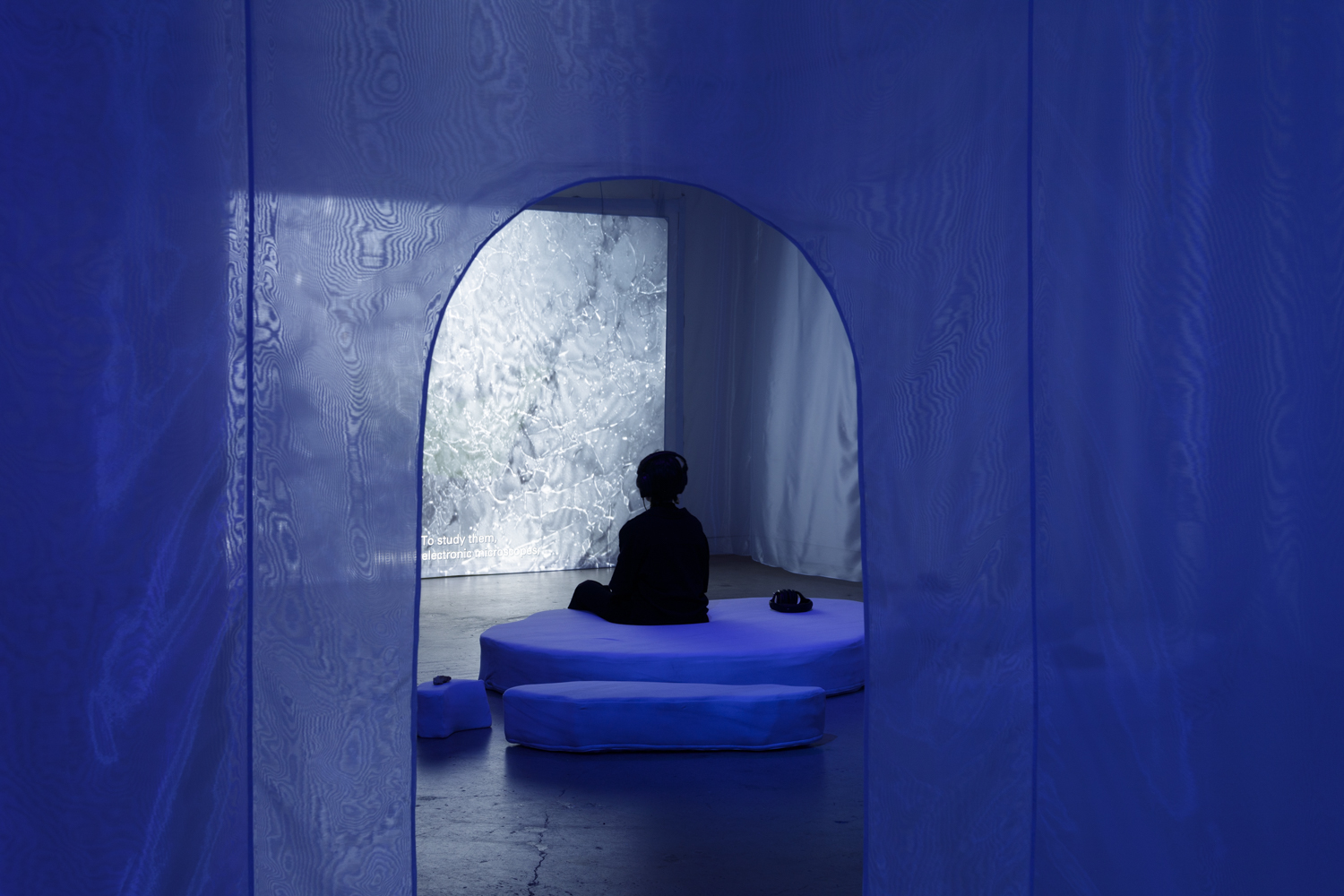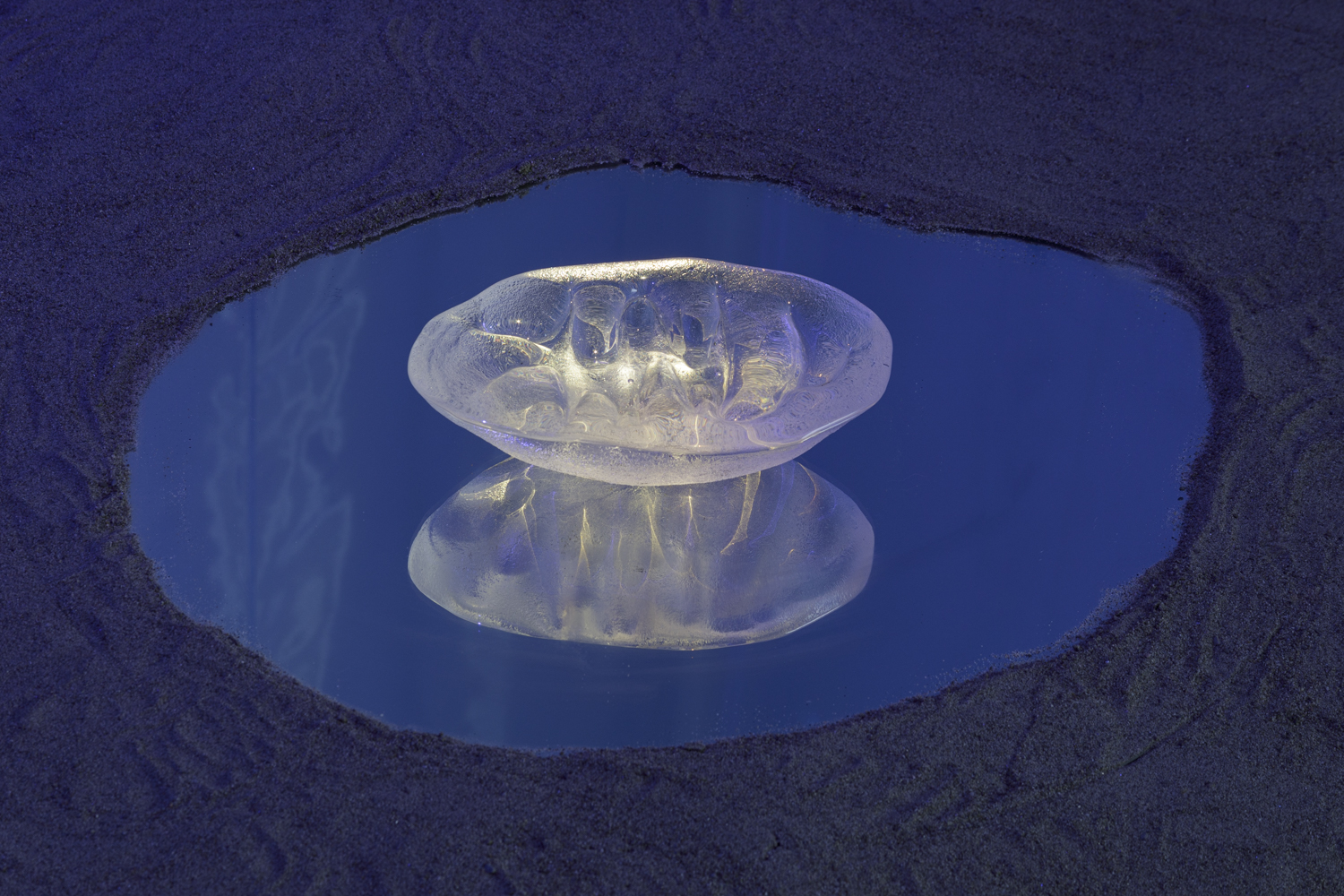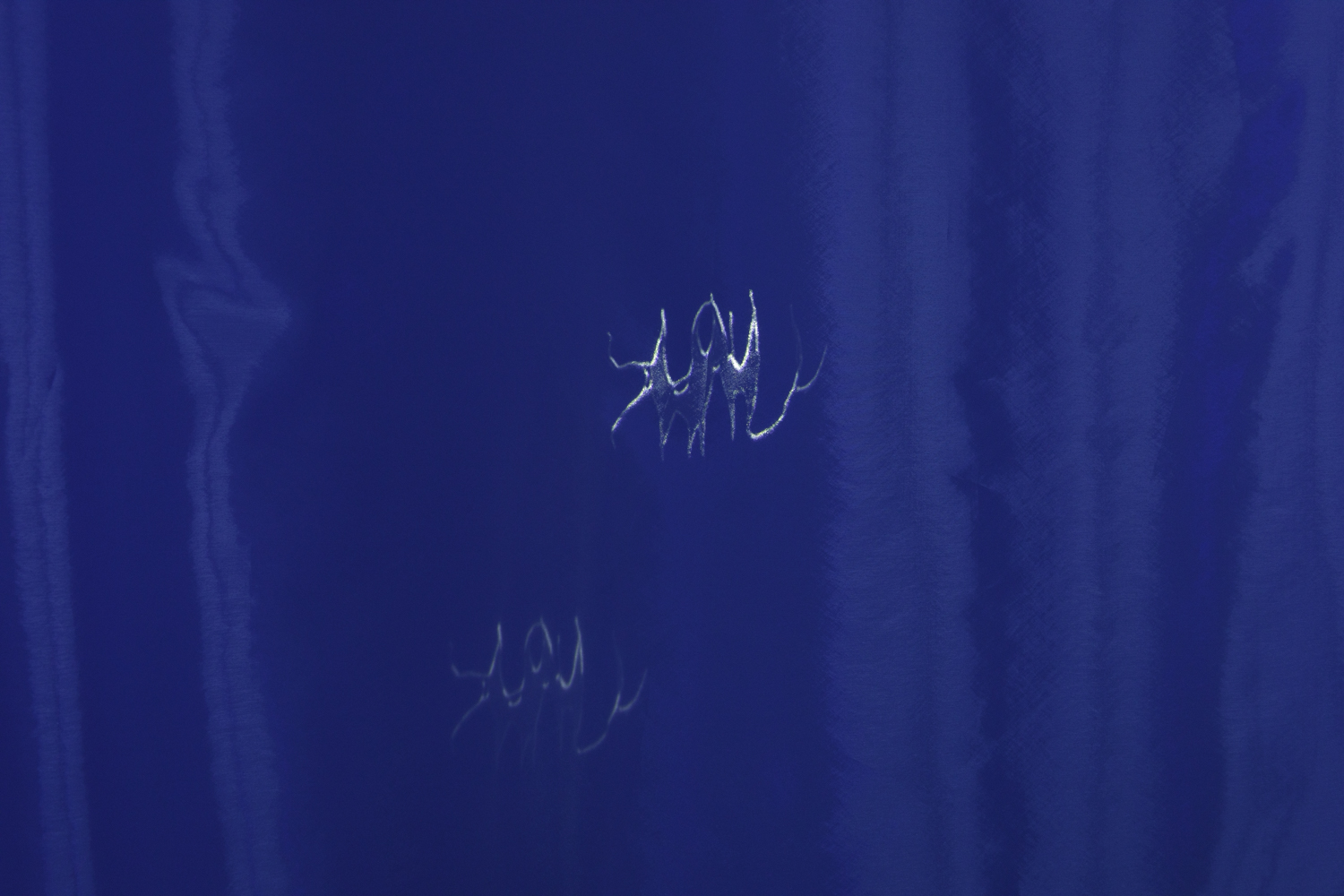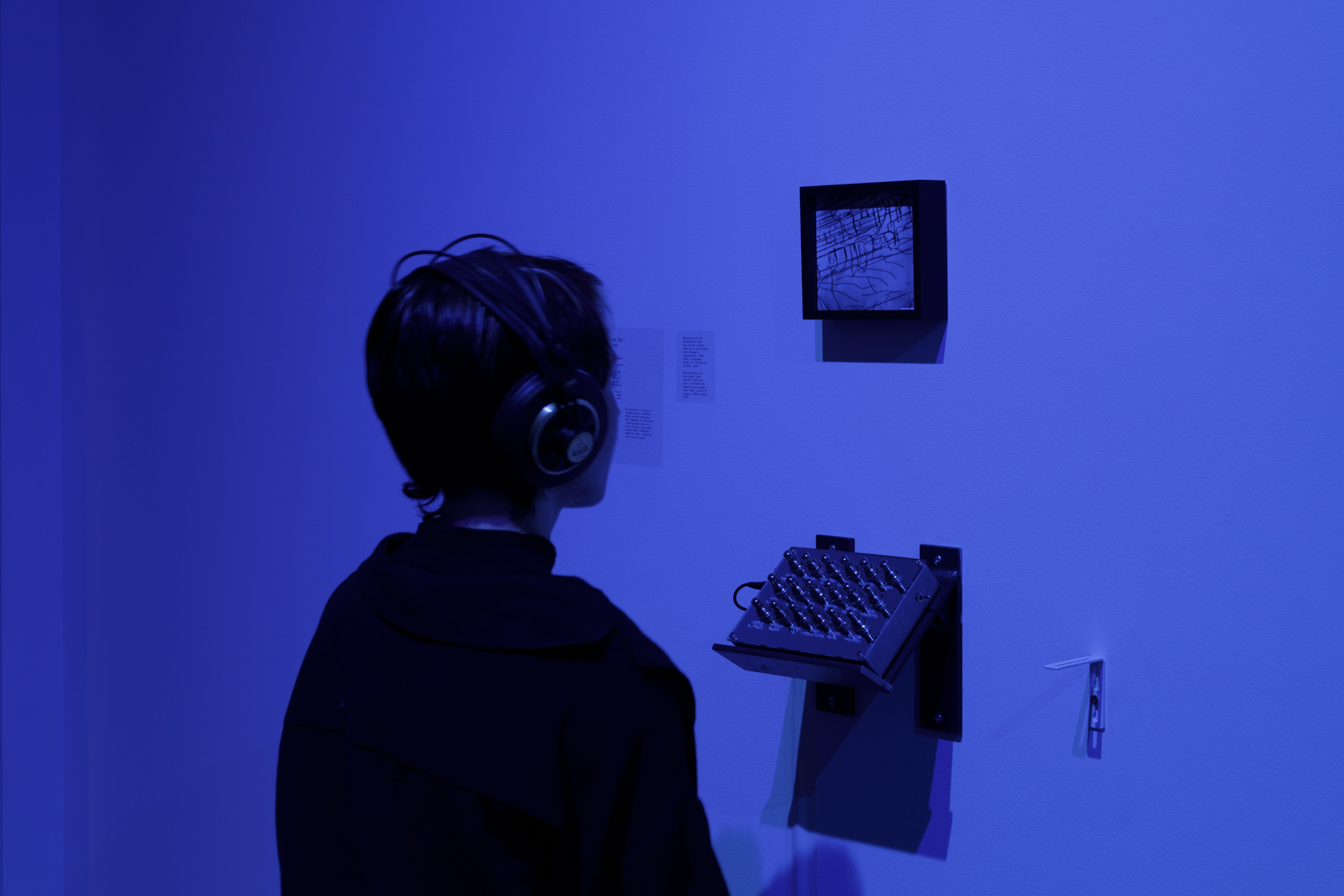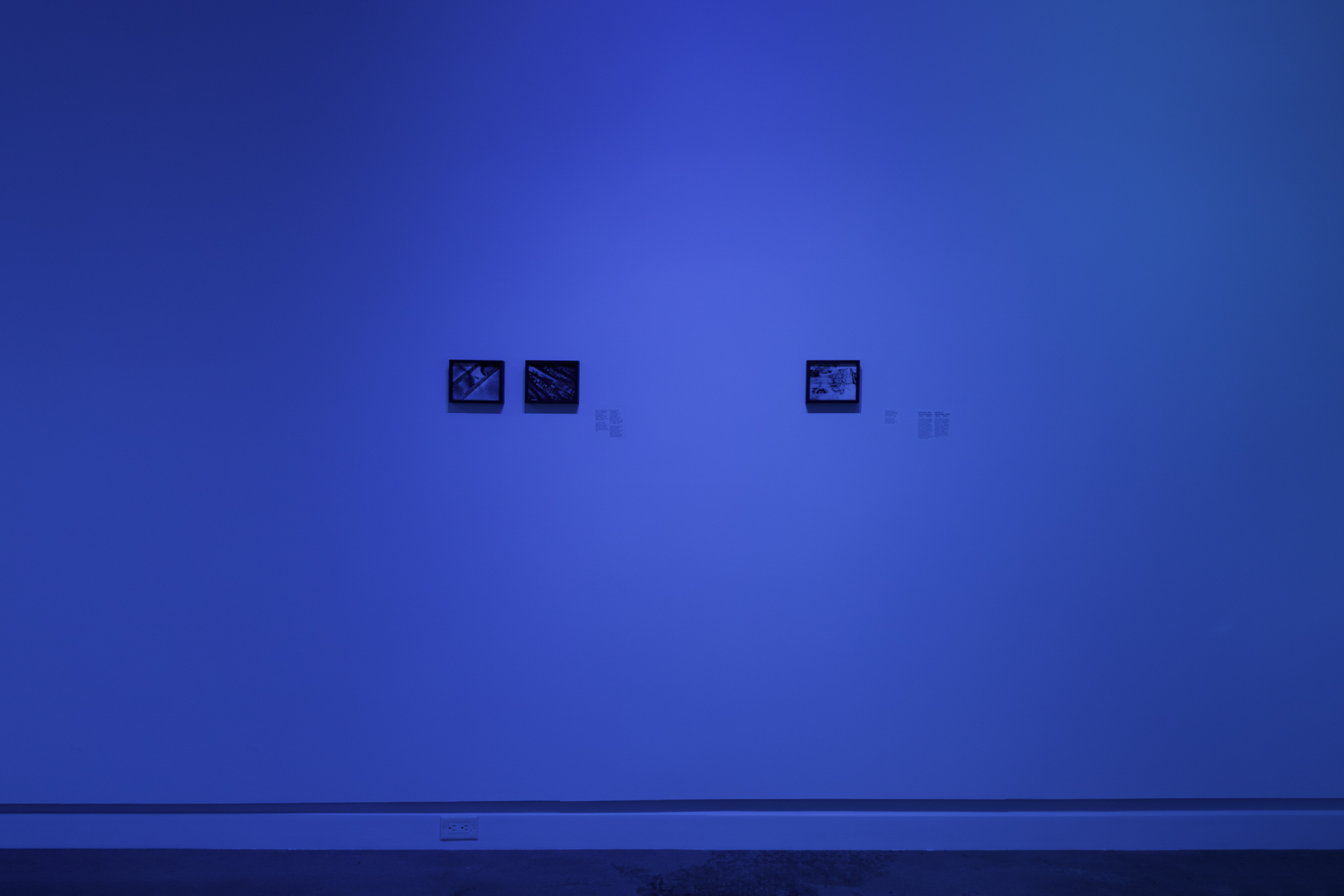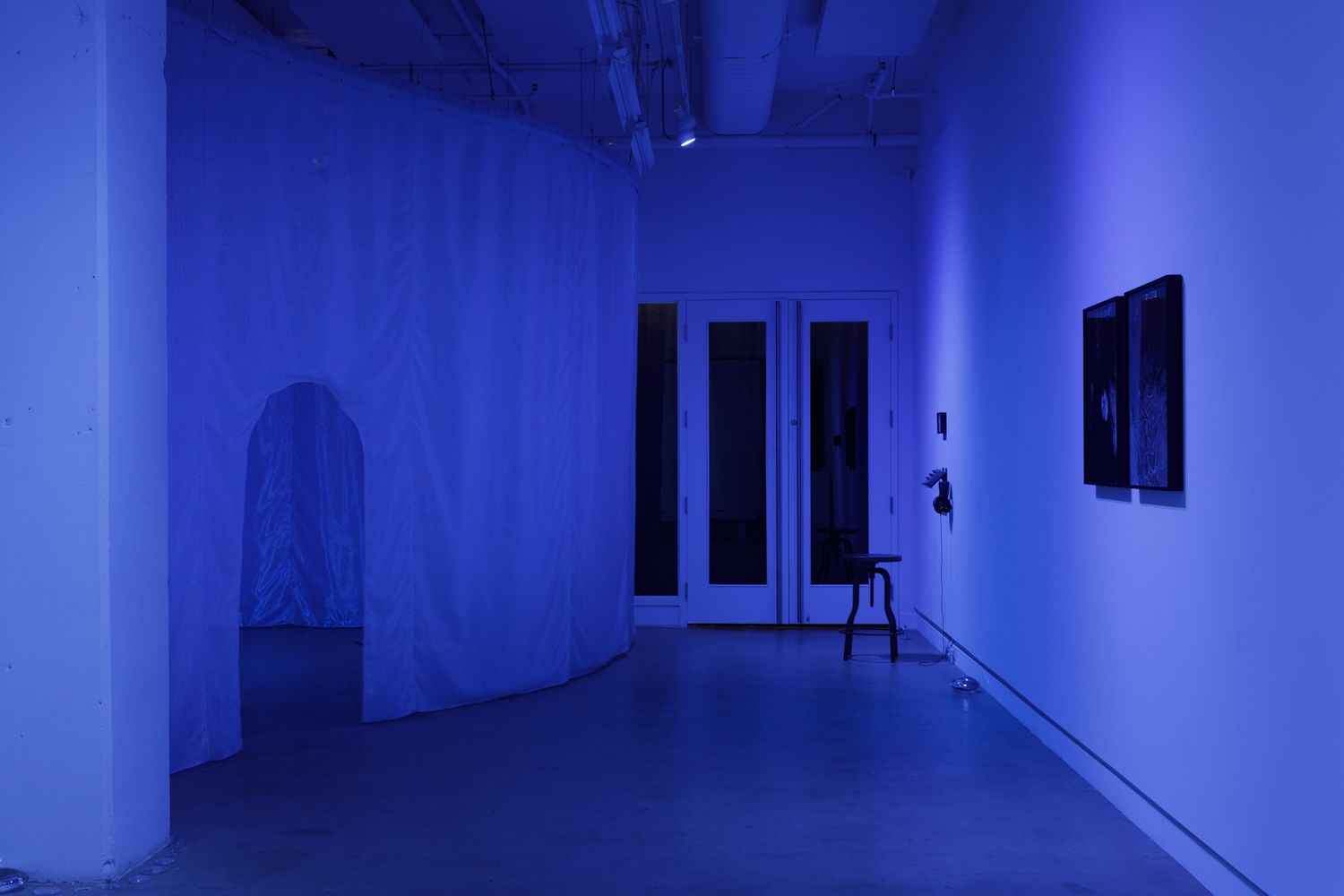this womb of things to be [1]
2024
exposition personnelle / solo show
Diagonale, Montréal (QC)
« Il y avait un mot à l'intérieur d'une pierre. J'ai essayé de le dégager à l'aide d'un maillet, d'un ciseau, d'un piolet et d'un bâton jusqu'à ce que le sang coule, mais je n'arrivais toujours pas à entendre le mot que la pierre avait prononcé. Je l'ai jetée sur le bord de la route parmi un millier de pierres et, alors que je me détournais, elle a crié le mot à haute voix dans mon oreille et la moelle de mes os l'a entendu et y a répondu. » – Ursula K. Le Guin, The marrow, 1981
Si nous portions réellement attention aux pierres, que pourrions-nous percevoir ? Peut-être nous raconteraient-elles des souvenirs surprenants et émouvants. Peut-être nous révèleraient-elles des secrets enfouis sous la surface de la Terre ou ceux de corps célestes voyageant dans l’espace profond depuis des millénaires. Ou encore, peut-être nous guideraient-elles dans les décisions à prendre pour nous assurer un avenir plus serein.
Alors que la pensée occidentale s’est développée autour de la conception d’une matière minérale inerte, celle-ci pourrait nous apparaître beaucoup plus mouvante et fluide si nous la regardions différemment, si nous changions d’échelle d’espace et de temps pour l’observer.
En se concentrant sur les micro-réalités invisibles à l’œil nu, les chercheur·euse·s géolinguistes [2] Hugues Leroux et Anne-Marie Blanchenet nous donnent accès à l’univers riche du minéral, et aux potentiels poétiques qui l’habitent. À travers la lentille de leur microscope, c’est un monde complexe et animé qui se dévoile. Une matière remplie de « messages [3] » qui nous forcent à reconsidérer la vision sur laquelle des générations se sont appuyées pour justifier les politiques extractivistes.
Dans l’exposition this womb of things to be, Charline Dally propose un voyage à travers ces fragments de météorites et de pierres lunaires. Témoignant de la charge poétique du langage scientifique, l’exposition ouvre la voie à un espace liminal, oscillant entre le réel et la fiction. Un espace où les roches sont nos semblables, nos ami·e·s, nos guides, où nous sommes invité·e·s à nous asseoir auprès d'elles pour observer patiemment leurs fissures se cicatriser, et donner naissance à de nouveaux possibles.
Eve Laliberté
[1] Ursula K. Le Guin, “The Carrier Bag Theory of Fiction”, Dancing at the Edge of the World, Grove Press, New York, 1989.
[2] Ursula K. Le Guin, “The Author of the Acacia Seeds and Other Extracts from the Journal of the Association of Therolinguistics”, The Compass Rose, Harper Perennial, New York, 1982.
[3] Hugues Leroux, micro-message, vidéo, 8 min, 2024.
exposition financée par le Conseil des arts du Canada.
le disque de poussière, production Le Fresnoy - Studio national des arts contemporains.
-
this womb of things to be [1]
“There was a word inside a stone. I tried to pry it clear with a mallet, and chisel, pick and gad, until the stone was dropping blood but still I could not hear the word the stone had said. I threw it down beside the road among a thousand stones, and as I turned away it cried the word aloud within my ear, and the marrow of my bones heard and replied.” – Ursula K. Le Guin, The marrow, 1981
If we really paid attention to the stones, what could we perceive? Perhaps they'll recount surprising and moving memories. Perhaps they reveal secrets buried beneath the surface of the Earth or those of celestial bodies travelling in deep space for millennia. Or perhaps they will guide us in the decisions we need to make to ensure a more serene future.
While Western thinking has developed around the concept of inert mineral matter, it could appear much more dynamic and fluid to us if we looked at it differently, if only we could change the scale of space and time to observe it.
In focusing on micro-realities invisible to the naked eye, geolinguistic [2] researchers Hugues Leroux and Anne-Marie Blanchenet give us access to the rich universe of minerals and the poetic potential that inhabits them. Through the lens of their microscope, a complex, animated world is revealed. A material full of "messages [3] " that force us to reconsider the vision of multiple generations of extractivist policies.
In the exhibition this womb of things to be, Charline Dally proposes a journey through fragments of meteorite and moon rocks. Bearing witness to the poetic charge of scientific language, the exhibition opens the way to a liminal space, oscillating between reality and fiction. A space where rocks are our fellow creatures, our friends, our guides, where we are invited to sit beside them, patiently watching their cracks heal, and give birth to new possibilities.
Eve Laliberté
[1] Ursula K. Le Guin, “The Carrier Bag Theory of Fiction”, Dancing at the Edge of the World, Grove Press, New York, 1989.
[2] Ursula K. Le Guin, “The Author of the Acacia Seeds and Other Extracts from the Journal of the Association of Therolinguistics”, The Compass Rose, Harper Perennial, New York, 1982.
[3] Hugues Leroux, micro-message, vidéo, 8 min, 2024.
exhibition funded by the Canada Council for the Arts.
le disque de poussière, production by Le Fresnoy - Studio national des arts contemporains.
CRÉDITS
production : Art dressé
création graphique : Juliette Duhé
déclinaison graphique : Juliette Moal
texte : Eve Laliberté
traduction : Chelsea Kingsett
compositions sonores : Angelo Bayraktar, Buisson, Catherine Debard, Err is human, Gabrielle HB, gLoart, Luke Loseth, Li Guowen, Max Farrell, Morgane Bello, Mylène Gérémie, Nick Schofield, Philipp Freyja Planck, Philippe Vandal, Vivian Li, Rodolfo Rueda, Roger Tellier-Craig, the new objective
musique : Bénédicte
chercheur en astrominéralogie : Hugues Leroux
textile : Justine Cossette
encadrement : Naide D'Amico
images d’archive : NASA, Hugues Leroux
impression : Photosynthèse, Tsar, Eastern Bloc
métal : Lola Dancose
verre : Zou Desbiens
découpe CNC : Virginie Lamarre
occultation textile : Coline Marchand
teinture : Empreintes vestiges
électronique : Gregory Perrin
jukebox mix : Gabrielle HB
animation 3D : Emma Forgues
technique : Camille Desjardins
montage : Camille Desjardins, Consuelo Donati, Diego D’onofrio
documentation : document original, Alex Pouliot


